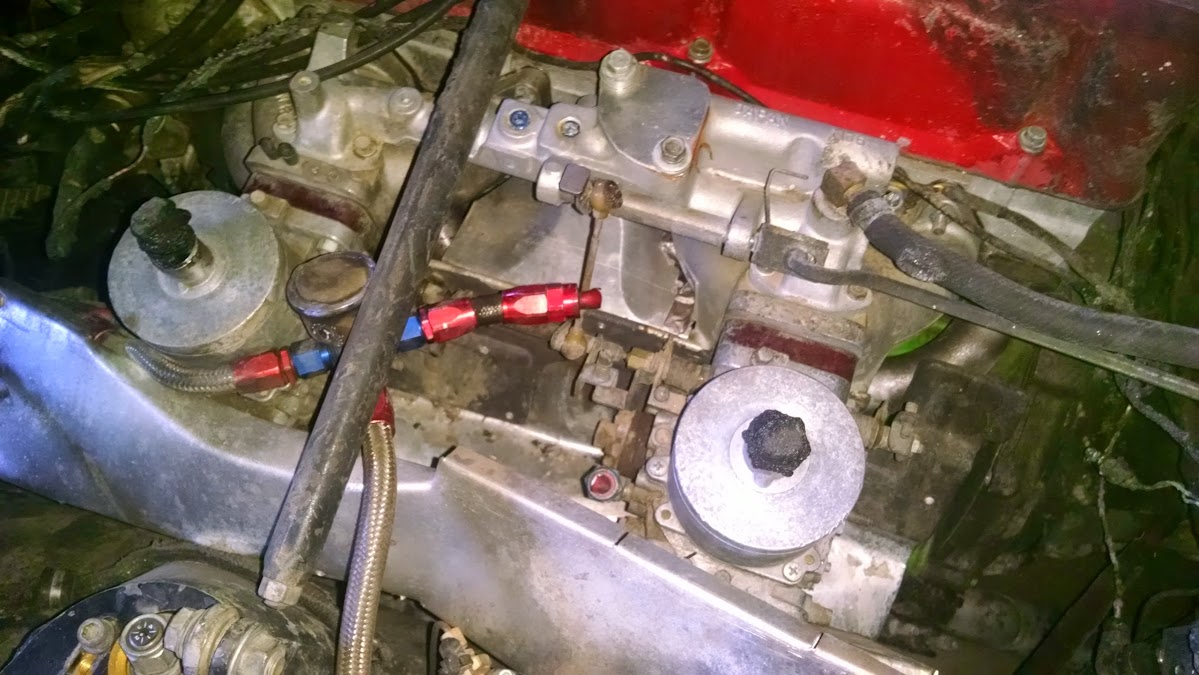I too appreciate the constructive dialogue.
I'd like to add my 2 cents.
The implementation of fire suppression systems can be done many ways. Here's how I did mine and why I made the choices I did.
I have a 5 lb. remote activated bottle. Many times these things are rated for multiple nozzles, but my philosophy is that the purpose of a hard mounted, high capacity system is to provide me an envelope of protection in the event of a fire, to permit time to escape the situation. I don't have a nozzle in the engine bay at all. This bottle plumbing is routed to a location on the forward left side door area of my car, with a nozzle that has three discharge holes that will spray in a 180 degree pattern. If I activate the system, the entire contents of the system will discharge from the direction I want to go, from the uninvolved to the involved, in theory creating a zone of protection for me to escape.
In addition to this on board system, I also carry an ordinary 2.5 lb. 10ABC rated hand held dry chemical extinguisher that has a robust mount in the car to prevent it from becoming a missile in the event of a hard hit. My thought on this is that this extinguisher can be taken to wherever the fire suppression needs to actually occur, whether it's on my car, or even someone else's car. Who else is in a better position to undertake fire suppression activities than me? I'm already on scene, I'm fully outfitted in safety gear, and I'm most familiar with my own car. Or, I can assist with fire suppression on other incidents when that's indicated. I can't really recommend this enough, to equip your race car with a portable extinguisher. I'm not passing judgment on the incident here, it went really well all things considered, but imagine if the driver had an extinguisher of his own to deploy just as he exited the car.
Finally, I have a 10 lb. bottle with a temperature fuse activated head mounted in the rear part of the car to protect the fuel cell. This system is self deploying.
Regarding kill switch location, mine is on some chassis tubes right in the center of the cockpit area. I can reach it from my seat while fully harnessed in, it can be reached from either side of the car through either window, or through the windshield opening if the lexan happened to be absent. Seems like a pretty good location I guess.


